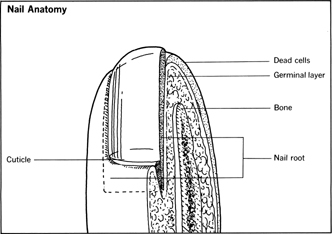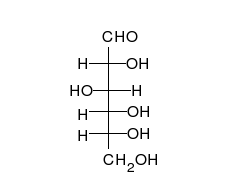Sunday, November 14, 2010
Friday, November 12, 2010
INTEGUMENTARY SYSTEM

INTEGUMENTARY SYSTEMIS COMPOSED OF NAILS, HAIR AND THE SKIN. INTEGUMENTARY SYSTEM PROTECTS US FROM PATHOGEN INVASION, HELPS KEEP THE BODY FROM DRYING OUT, ACTS AS STORAGE FOR FATTY TISSUE, PRODUCES VIT. D, PROVIDES SENSORY INPUT, AND IT REGULATES BODY TEMPERATURE. SKIN IS COMPOSED OF 3 LAYERS THE EPIDERMIS, THE DERMIS AND THE SUBCUTANEOUS FASCIA. NAILS ARE SPECIALIZED CELL ORIGINATING FROM THE NAIL ROOTS. HAIR HELPS REGULATE BODY TEMPERATURE. IT IS COMPOSED OF KERATIN. SHAFT IS THE HAIR THAT YOU SEE. SEBUM IS SECRETED BY THE SEBACEOUS GLANDS THAT IS OILY AND SOMEWHAT ANTIBACTERIAL
MUSCULAR SYSTEM

MUSCULAR SYSTEM IS MAINLY COMPOSED OF MUSCLES. MUSCLES ARE ALL CONTRACTILE TISSUES, THAT IS APPROXIMATELY THE DIAMETER OF A HAIR. IT CAME FROM THE LATIN WORD "MUS" WHICH MEANS MOUSE SINCE IT MOVES LIKE A MOUSE UNDER OUR SKIN. IT HAS 3 TYPES THE SKELETAL, THE SMOOTH AND THE CARDIAC MUSCLES. SKELETAL MUSCLES ARE VOLUNTARY MUSCLES THAT IS ATTACHED TO THE BONES. IT IS ALSO CALLED STRIATED MUSCLES AND IT PROVIDES MOVEMENT FOR THE BODY. SMOOTH MUSCLES ARE THE ONE FOUND IN OUR ORGANS THEY ARE INVOLUNTARY. CARDIAC LIKE SMOOTH MUSCLE IS INVOLUNTARY AND IT IS FOUND IN OUR HEART. THE PRIMARY MOVERS ARE THE AGONISTS WHILE THE MUSCLE CAUSING MOVEMENT TO OPPOSITE DIRECTION IS THE ANTAGONISTS. THE MUSCLE END ATTACHED TO THE STATIONARY BONE IS THE POINT OF ORIGIN AND THE MUSCLE THAT IS ATTACHED TO THE MOVING BONE IS CALLED THE POINT OF INSERTION. THE ONE WHO ASSISSTS IN MOVEMENT IS THE SYNERGISTIC. ROTATION IS THE CIRCULAR MOVEMENT OCCURING AROUND AN AXIS. ABDUCTION IS THE MOVEMENT AWAY FROM THE MIDLINE OF THEBODY IS ABDUCTION AND THE OPPOSITE OF IT IS ADDUCTION.
Thursday, November 11, 2010
SKELETAL SYSTEM II

I LEARNED ALL ABOUT JOINTS. JOINTS ARE THE PLACE WHERE THE BONES MEET; JOINTS ARE ALSO CALLED ARTICULATION. THIS IS HELD TOGETHER BY A LIGAMENT. JOINTS HAVE 3 TYPES ACCORDING TO FUNCTION THESE ARE IMMOBILE, CAN MOVE A LITTLE AND FREELY. JOINTS IS ALSO CLASSIFIED ACCORDING TO STRUCTURE THESE ARE FIBROUS, CARTILAGINOUS AND SYNOVIAL. SYNOVIAL JOINTS ARE CLASSIFIED INTO 7 THE SADDLE, CONDYLOID, ELLIPSOIDAL, PIVOT, BALL & SOCKET, HINGE, AND GLIDING. SADDLE JOINT'S MOVEMENT IS UP&DOWN AND SIDE2SIDE. CONDYLOID'S MOVEMENT IS FROM OTHER PLACE TO ANOTHER BUT NO ROTATION. ELLIPSOIDAL HAS 2 AXES OF MOVEMENT. PIVOT ROTATES, BALL & SOCKET CAN DO ALL. HINGE ARE OPEN AND CLOSE. GLIDING ARE BACK AND FORTH. I ALSO LEARNED ABOUT CARTILAGE. THE SPECIAL CONNECTIVE TISSUE THAT CAN WITHSTAND FAIR AMOUNT OF FLEXION.
Thursday, September 30, 2010
SKELETAL SYSTEM

SKELETAL SYSTEM HAS MANY FUNCTIONS IT INCLUDES FRAMEWORK, IT PRODUCES RED BLOOD CELLS, PROTECTS VITAL ORGANS SUCH AS BRAIN, PROVIDES MOVEMENT. WE ARE COMPOSED OF 206 BONES. THEY ARE CLASSIFIED INTO LONG, SHORT, FLAT AND IRREGULAR BONES. IT IS CONNECTED BY A LIGAMENT. WHEN BONES MEET OTHER BONE THEY FORM JOINTS OR ARTICULATION.BONES HAVE TWO TYPES NAMELY SPONGY AND COMPACT.
TISSUES

TISSUES ARE GROUP OF CELLS THAT HAS FUNCTION. WHEN TISSUES GROUP TOGETHER THEY FORM ORGANS. THERE ARE 4 TYPES OF TISSUE THE EPITHELIAL, CONNECTIVE, MUSCLE AND THE NERVOUS TISSUES. CONNECTIVE TISSUES ARE FIBROUS TISSUES, CONNECTIVE TISSUES ARE TENDONS AND LIGAMENTS, MUSCLE TISSUE PROVIDE MEANS FOR MOVEMENT AND NERVOUS TISSUES ARE INSTANT MESSENGERS OF THE BRAIN. THE STUDY TISSUE IS CALLED HISTOLOGY.
Wednesday, September 8, 2010
Friday, August 27, 2010
MEIOSIS
Meiosis is one of the cell divisions happening in our body. Meiosis happens only in germ cells or the gametes.It has many difference on mitosis like it produces haploid cells, and it is not a cycle. It is quite similar to mitosis the only difference is the prophase I. Prophase I has 5 sub-stages namely leptotene, zygotene, pachytene, diplotene, and diakinesis.
In leptotene individual chromosomes begin to condense into long strands within the nucleus. In zygotene individual chromosomes begin to condense into long strands within the nucleus.
In pachytene the synapsis of homologous chromosomes takes place. In diplotene chiasmata the regions where crossing-over occurred. In diakinesis four parts of the tetrads are actually visible. metaphase I, anaphase I, telophase I and meiosis II are the similar with mitosis.
In leptotene individual chromosomes begin to condense into long strands within the nucleus. In zygotene individual chromosomes begin to condense into long strands within the nucleus.
In pachytene the synapsis of homologous chromosomes takes place. In diplotene chiasmata the regions where crossing-over occurred. In diakinesis four parts of the tetrads are actually visible. metaphase I, anaphase I, telophase I and meiosis II are the similar with mitosis.
Friday, August 20, 2010
MITOSIS/ CELL DIVISION

MTOSIS IS one of the cell division the other one is meiosis which is majorly in reproductive cells. Cell division starts with interphase, interphase has 3 stages namely G1, S and G2. After interphase, mitosis starts with early prophase where chromosomes starts to thicken and form a duplicated chromosome. Late phrophase is where th centrioles go far away from each other to go to opposite pole, this is also where the chromosomes form ''X'' shape. Metaphase is where the spindle fibers from the centriole hold the centromere of aligned chromosomes. Anaphase is where the opposite poles get the half of the chromosome. Then telophase happens and form cleavage furrow and the daughter cells has its own nucleus.
Saturday, August 14, 2010
THE CELL

The cell has 3 main parts the cell membrane, nucleus and cytoplasm. Nucleus is the brain of the cell since it contains all the genetic materials like the DNA and RNA. It has other parts like nucleolus, chromatin, nucleopore and nuclear membrane. Cell membrane is the one who protects the cell because it is semipermeable which means it is selective and don't just let anything in. Cytoplasm is further divided into 2 the cytosol and organelles. Cytosol is the gel like substance where the organelles float or can be found. Organelles are the one responsible for cell activities examples of organelles are ribosomes, rough endoplasmic reticulum, smooth endoplasmic reticulum, golgi apparatus, cytoskeleton, mitochondrion, vacuole, lysosome and centrioles. The picture in the right is an example of nucleus.
Friday, July 30, 2010
NUCLEIC ACIDS and LIPIDS

Nucleic acids are polymer that gives information in a cell. The two major types are DNA and RNA. DNA is a genetic material determining while RNA is mainly on protein synthesis. It has 3 parts the five carbon simple sugar molecule, phosphate group and the nitrogenous base. nucleic acids has 5 base pairs adenine, guanine, thymine, cytosine and uracil. Lipids is also called fats but it is not a polymer, they are insoluble in water but soluble in alcohol and has less O. Lipids can be simple or complex depending on the presence of fatty acid. Complex lipids are further divided into four types waxes, acylglycerol, phosphoglyceride and sphingolipids. Simple lipids are also divided into 3 types terpenes, steroids and prostaglandins.
Friday, July 23, 2010
PROTEINS( AMINO ACIDS )


Proteins like carbohydrates are polymer that is composed of monomer that is amino acid. Molecular structures of proteins differ only in their R group. As you can notice alanine and valine differ only in the H of alanine. Protein can be an enzyme which helps us digest food more faster. You will know if it is an enzyme if it has a suffix -ase, like maltase which digests maltose. Protein can also exist as a hormone which is released in our endocrine glands, hormones send messages that has to do something with our body.
CARBOHYDRATES


Carbohydrates is one of the most important organic molecules in our body. It is a polymer which means it is made up of many building blocks called monomers. Carbohydrates are usually classified as L and D, they depend to the second to the last carbon. Carbohydrates has three types, monosaccharides, disaccharides and polysaccharides. Monosaccharides are the simplest form of carbohydrates. Disaccharides are composed of two monosaccharides while polysaccharides is composed of three or more monosaccharide.
Saturday, July 17, 2010
ANTOMICAL TERMS

IN Biology, there are many anatomical terms used for describing and telling what is wrong with our body. All terms used in biology came from Latin words for example,. cardi/o means heart or has something to do with the heart. Every part of our body has its own term that is used for easier detection of any complications in our body system. the body is also has sections like the transverse, saggital and the coronal section, they are divide the body into medial and lateral, superior and inferior, and anterior and posterior.
Subscribe to:
Posts (Atom)